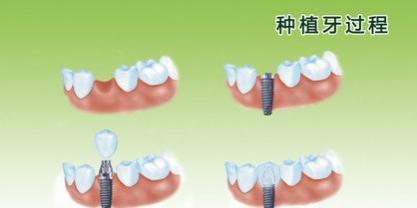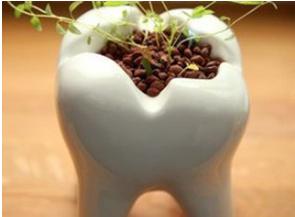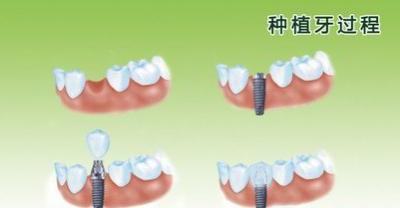Methods and steps of diagnosis and differentiation of dental implant
Click on the upper right corner to follow immediately, more health content will no longer be missed, occasional surprises will be given to you.
The diagnosis and treatment of dental implant can be divided into preoperative examination (general health examination, oral examination, treatment plan, gingival treatment), the first operation (implant), oral disinfection and suture removal, osseointegration, the second operation (connecting the superstructure of the implant), making the crown and wearing it, and regular revisit and maintenance. only when these are achieved are successful dental implants.

Compared with traditional dentures, artificial implants have many outstanding advantages in dental implant diagnosis and differentiation.
1. Its masticatory function is much better than other dentures.
two。 It has strong retention and stability, and can be stuck in the patient's mouth like real teeth.
3. You can grind your real teeth less or not.

4. There is no need for the necessary bases and clasps for movable teeth, and there is no taste dullness and discomfort caused by large areas of bases.
5. Small size does not expose metal, beautiful, more conducive to keep the oral cavity clean and hygienic.
The maintenance of implant teeth after operation is directly related to its service life. Generally, the following problems should be paid attention to after operation:
1. Dental implants are generally divided into two steps: the first time: implanting artificial roots; the second time: inserting fixed dentures on the stabilized artificial roots. After implanting artificial roots, do not wear temporary dentures before stitches are removed. Wait for 7-10 days to remove stitches and see if they need to be modified before deciding whether to wear them.
2. Within three to six months after the stitches are removed, do not make the artificial tooth root shake, do not use it to chew hard, lest the tooth root become loose, so that the newly formed bone and fibrous connective tissue around the tooth root will be affected, thus affecting the planting effect. This is a very important issue to ensure the planting effect.
3. Pay attention to oral hygiene after implanting artificial tooth root, gargle in time after meal, or gargle with medicine solution, and clean the implant abutment with a soft brush or cotton sliver every morning and evening.

4. After inserting porcelain teeth, it is not suitable to chew things that are too hard. On the one hand, there is no protective pressure sensor around the artificial root, so the root tissue is easy to be damaged; on the other hand, porcelain teeth are brittle and are not easy to repair after damage.
5. Prevent from being hit by external force. once the impact has the possibility of injuring the root of the tooth, it should be examined and treated in the hospital immediately.
6. Carry out the doctor's orders conscientiously and return to the hospital regularly. They are usually revisited at 1, 3, 6 and 12 months.
7. After the porcelain teeth are inlaid, attention should be paid to the hygiene of the area between the porcelain teeth and the neighboring teeth to prevent the occurrence of dental caries.
Note: the picture in this article is from the Internet. If there is any infringement, please contact and delete it.
- Prev

When growing watermelons, my eldest cousin smokes a cigarette.
I got up after 6 o'clock in the morning and it was 7 degrees below zero outside. The eldest cousin takes the time and doesn't take a break.
- Next

Which is better to implant teeth with VS insert?
With the popularity of Baird's first customer service festival, many citizens have come up with the idea of dental implants, but it is not clear whether dental implants are good or not. So one after another.
Related
- Fuxing push coffee new agricultural production and marketing class: lack of small-scale processing plants
- Jujube rice field leisure farm deep ploughing Yilan for five years to create a space for organic food and play
- Nongyu Farm-A trial of organic papaya for brave women with advanced technology
- Four points for attention in the prevention and control of diseases and insect pests of edible fungi
- How to add nutrient solution to Edible Fungi
- Is there any good way to control edible fungus mites?
- Open Inoculation Technology of Edible Fungi
- Is there any clever way to use fertilizer for edible fungus in winter?
- What agents are used to kill the pathogens of edible fungi in the mushroom shed?
- Rapid drying of Edible Fungi

